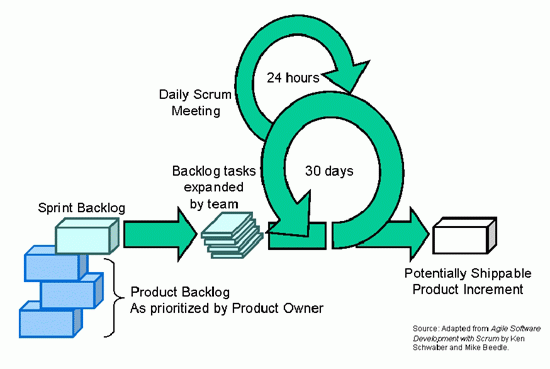Scrum: Scrum is a framework structured to support complex product development. Scrum consists of Scrum Teams and their associated roles, events, artifacts, and rules. Each component within the framework serves a specific purpose and is essential to Scrum’s success and usage.[23] Scrum is a simple low overhead process for managing and tracking software development. It attempts to control this 'chaordic' process using a project management framework that involves requirements gathering, design and programming.[9] Scrum Framework: The Scrum framework consists of Scrum Teams and their associated roles, events, artifacts, and rules. Each component within the framework serves a specific purpose and is essential to Scrum’s success and usage.[23] Below is the picture of the Scrum Framework Model. I have segmented the Scrum Framework into three categories - The Scrum Artifacts, Scrum Events, and Scrum Team. On the links in the navigation menu click on each category under the Scrum Framework heading to view the full explanation and detail of the entire contents of the Scrum Framework. [ The discussion and detailed explanation of the Scrum Framework Artifacts, Events, and Team are in the links on the sub pages in the navigation menu and the links are at the bottom of this page as well. ]
|
